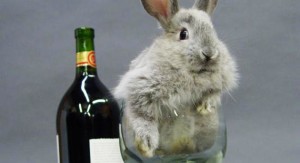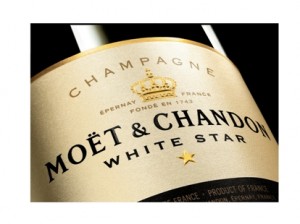Wine is both an entirely festive way to celebrate the holiday season and a winning approach for gift-giving. The trouble is knowing what to pour - when - and what to gift - to whom. Are we right?
This holiday season we're giving the gift that keeps on giving - easy answers. Below, you'll find wine solutions for your party planning conundrums as well as ideas for gift giving - from stemware to great reads.
Remember, there's naturally some overlap - often wine itself is a wonderful solution in and of itself. So take these ideas and run with them. You're sure to hit the nail on the head with a touch of your own personalization.
Sparkling Wines
From hosting to gifting, sparkling wine is a foolproof way to bring a natural, festive flare to bear. If you don't know your recipient (or his/her tastes) well, they are also a great answer to The Personalization Problem. No matter what, they add levity - and New Year's is a built-in opportunity to open and enjoy.
Here is our own Guide for Selecting the Right Sparkling Wine for the Occasion.
Need specific ideas? Some of our favorite sparkling wines this year can be found below, beginning with the most affordable styles (e.g. Prosecco + Cava) to the most baller (Champagne). (Note: These specific wines are available to those of us shopping in the Greater Boston area. You can ask your local retailer to order any wine they don't stock.)
Marsuret Prosecco | Veneto, Italy (Valdobbiane)
Deliciously quaffable and festive, Prosecco wines have taken the world by storm. Here the Marsura family stays true to their 80-year tradition to produce a particularly winning option: zesty, delicately pear-nuanced with a touch more pizzazz than its counterparts.
When/For Whom? Cost-effective, basic bubbly that delivers a festive element/gesture. Ideal for any and everyday - from a holiday brunch to topping-off a "champagne" cocktail.
Dibon Cava | Penedes, Spain
Cava drinkers have gotten the memo for a footloose and fancy free sparkling beverage that’s closer to proper Champagne for its toasty notes and fleshier texture – at a fraction of the price. Frothy and fruit forward, Dibon delivers memorable peach and orange notes, backed by hazelnuts and citrus zest.
When/For Whom? Casually festive and versatile, but with a bit more to it. Appropriate to serve during cocktail hour, offer for a festive toast, or even segway into the first course. An affordable way to thank/appreciate colleagues, or supply a casual host/ess gift.
Cave de Saumur Crémant de Loire "49M" | Loire, France
Crémant wines come from elite regions of France - outside of Champagne - and are goldmines for exceptional sparklers. This hidden gem from one of our favorite CO-Ops is both charming and dry - and bursting with familiar fruit nuance. You can't go wrong with 49 Million, tiny, crowd-pleasing bubbles!
When/For Whom? Crémant wines are our Go-Tos because they are perfect for dialing things up a notch, without anyone knowing how much you spent. You'll be winning with a ~$20 budget.
Taittinger 2008 Brut Champagne | Champagne, France
This is the real deal, and then some. Featuring the 2008 vintage alone, this blend of all 3 legally-permitted Champagne grapes delivers tell-tale orchard fruits, a hint of stone fruits and mouthwatering citrus. Better still, its decadent brioche side makes you wonder if you just stepped into a Parisian bakery. . .
When/For Whom? To make an impression - this is brilliant, baller bubbly! Gift to your boss or open with really, really good friends.
Westport Rivers "RJR" Brut Sparkling Wine | Westport, Massachusetts
Massachusetts' own Westport Rivers Winery kills it when it comes to sparkling wine. And the RJR is their flagship - separating itself with a frothy, creamy mousse and giving you flashbacks to an autumnal New England picnic. (Bonus - this wine has been on the White House's go-to list!)
When/For Whom? Whenever you need a secret weapon or a local treat to gift/serve. Typically c. $37/bottle, we saw it recently for just c. $20!
choosing wines: Gifting + Celebrating
1. Looking to make a BIG splash? Whether throwing a party or looking to impress your gift-recipient, this trick never fails.
2. You can also boost your party vibe with a creative approach to wine selection that mitigates fussiness for you - and ensures guests stay engaged in the fun otherwise. Here's How.
beyond the bottle: the Essentials
STEMWARE. There's no need to geek-out on this one. Simply give a great glass that works perfectly well for wines of ALL colors. Our pick is the Vinum Riedel Extreme Series. We use the (white) Sauvignon Blanc option for ALL of the wines we taste/evaluate - red, white or pink. We love the sleekness of the glass as much as its versatility. (If you specifically know your recipient is a red wine fan, you could opt for their Bordeaux/Cabernet/Merlot glass instead. Don't overthink it beyond that!)
DECANTER. Did you know, there are 5 Good Reasons to Use a Decanter Everyday? And this essential tool isn't in everyone's at-home wine supplies repertoire - yet. You can use the holidays to change that with a lovely gift.
Here's one suggestion - a half bottle size. It won't break the bank - and offers a sweet alternative to decanting an entire bottle (not to mention delivering a user-friendly nudge toward that ideal everyday use).
GREAT READS, BY INTEREST.
for Fans of History, Villains + Heroes, or Fiction/Non-Fiction Crossover Reads: American Wine: A Coming of Age Story
for the Seasoned: The World Atlas of Wine
for the Novice: Oldman's Guide to Outsmarting Wine
for the Foodie: What to Drink with What You Eat










 .....aaaannnnnddddd we're back! With the official first day of fall under our belts this week, it's time to begin chatting about wine again after some needed R & R. Of course, just because I haven't been blogging about wine doesn't mean I haven't been
.....aaaannnnnddddd we're back! With the official first day of fall under our belts this week, it's time to begin chatting about wine again after some needed R & R. Of course, just because I haven't been blogging about wine doesn't mean I haven't been

